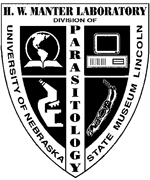Parasitology, Harold W. Manter Laboratory of

Harold W. Manter Laboratory of Parasitology: Library Materials
ORCID IDs
Escalante 0000-0002-1532-3430
Document Type
Article
Date of this Version
2022
Citation
American Journal of Tropical Medicine and Hygiene (2022) 107(4, Supplement): 168-181
doi: 10.4269/ajtmh.22-0127
Abstract
The 1990s saw the rapid reemergence of malaria in Amazonia, where it remains an important public health priority in South America. The Amazonian International Center of Excellence in Malaria Research (ICEMR) was designed to take a multidisciplinary approach toward identifying novel malaria control and elimination strategies. Based on geographically and epidemiologically distinct sites in the Northeastern Peruvian and Western Brazilian Amazon regions, synergistic projects integrate malaria epidemiology, vector biology, and immunology. The Amazonian ICEMR’s overarching goal is to understand how human behavior and other sociodemographic features of human reservoirs of transmission— predominantly asymptomatically parasitemic people—interact with the major Amazonian malaria vector, Nyssorhynchus (formerly Anopheles) darlingi, and with human immune responses to maintain malaria resilience and continued endemicity in a hypoendemic setting. Here, we will review Amazonian ICEMR’s achievements on the synergies among malaria epidemiology, Plasmodium-vector interactions, and immune response, and how those provide a roadmap for further research, and, most importantly, point toward how to achieve malaria control and elimination in the Americas.
Included in
Community Health and Preventive Medicine Commons, International Public Health Commons, Parasitic Diseases Commons, Parasitology Commons


Comments
Open access.
License: CC BY